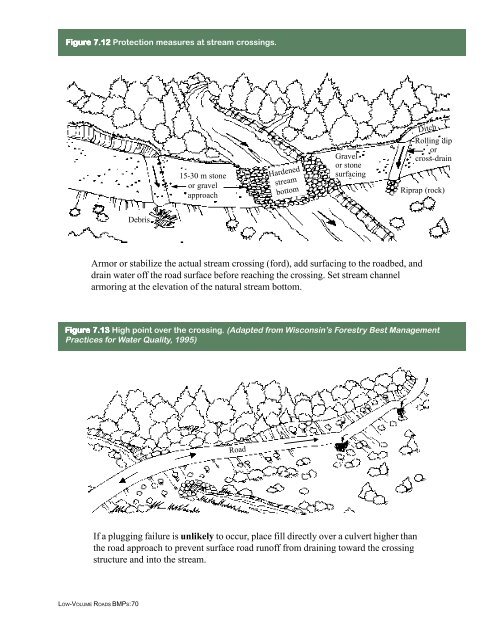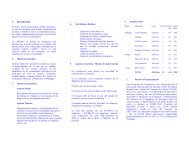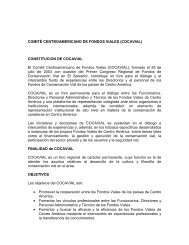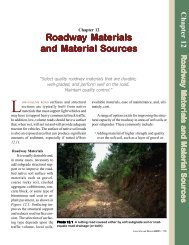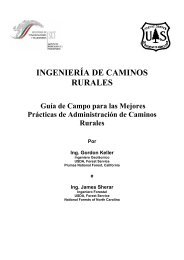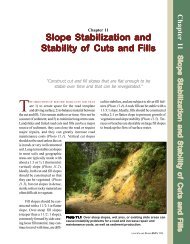Create successful ePaper yourself
Turn your PDF publications into a flip-book with our unique Google optimized e-Paper software.
Figur<br />
igure 7.12 Protection measures at stream crossings.<br />
15-30 m stone<br />
or gravel<br />
approach<br />
Hardened<br />
stream<br />
bottom<br />
Gravel<br />
or stone<br />
surfacing<br />
Ditch<br />
Rolling dip<br />
or<br />
cross-drain<br />
Riprap (rock)<br />
Debris<br />
Armor or stabilize the actual stream crossing (ford), add surfacing to the roadbed, and<br />
drain water <strong>of</strong>f the road surface before reaching the crossing. Set stream channel<br />
armoring at the elevation <strong>of</strong> the natural stream bottom.<br />
Figur<br />
igure e 7.13 High point over the crossing. (Adapted from Wisconsin’s Forestry Best Management<br />
Practices for Water Quality, 1995)<br />
Road<br />
If a plugging failure is unlikely to occur, place fill directly over a culvert higher than<br />
the road approach to prevent surface road run<strong>of</strong>f from draining toward the crossing<br />
structure and into the stream.<br />
LOW-VOLUME ROADS BMPS:70


